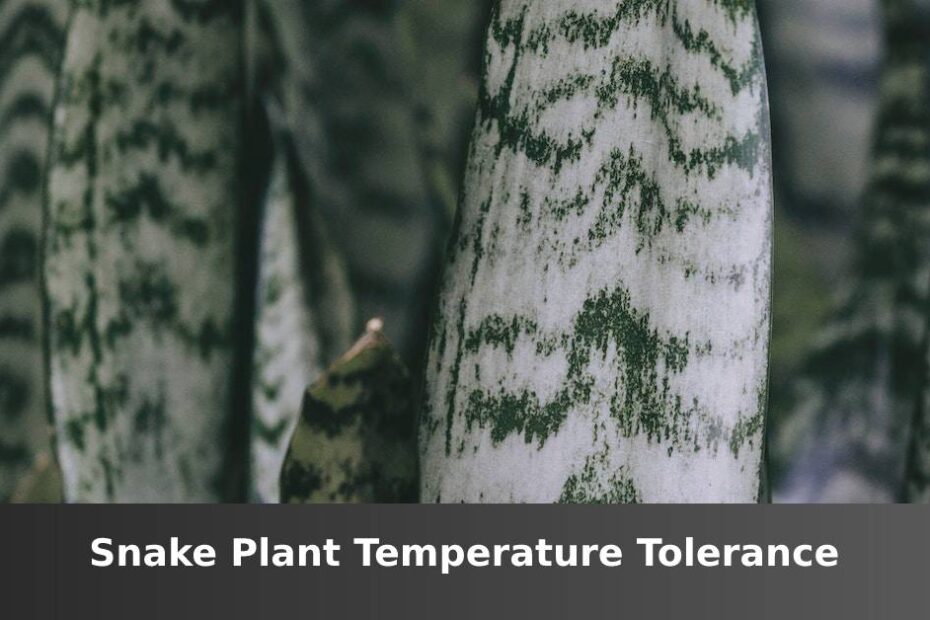When it comes to Snake plant care, the plants temperature tolerance is certainly something you should be aware of to be able to continue growing a healthy mother in laws tongue.
In short, the ideal temperature range for Snake plant’s lies somewhere between 65-90 degrees Fahrenheit so that is generally what you want to strive for.
You can go outside this range, but if the temperature drops below 50 degrees Fahrenheit then you can expect some problems to occur and if exposed to this cold for too long, your Snake plant will simply not survive.
So if you haven’t been paying too much attention to the temperature lately, it may be time to start doing so.
What temperature is too cold for Snake plants?
For most variations of Snake plants, the minimum temperature threshold is around 50 degrees Fahrenheit or 10 degrees Celsius.
If the temperature drops to this level, especially bellow this temperature then you can expect your Snake plant to drastically stop growing, become dormant or run into other issues before it eventually ends up dying.
If you’re growing your Sansevieria outdoors and you anticipate a cold front or cold weather in general, it’s advised to bring the plant indoors for the time being.
Who wants to let their Snake plant be neglected and die from cold weather?
Not you of course.
Thankfully when growing indoors you don’t have to worry about the temperature being too low unless you live in absurd temperatures (unlikely).
Overall anything 50 degrees Fahrenheit and below is a no go for Snake plants and should be avoided at all costs.
How much heat can a Snake plant take?
Snake plants are quite resilient to warm temperatures more so than most plants and can still grow in temperatures up to 100 degrees Fahrenheit.
This isn’t recommended though as eventually it will start to dry out faster than it should and start to get stressed out resulting in curling leaves, cracking leaves and or brown tips from sun scorch.
This is especially true if your Snake plant is getting too much direct light which should be limited to only a few hours a day.
For more on light conditions, check out my article on Snake plant light requirements so you can provide the right type of light it deserves.
So to answer the question, can a Snake plant survive in 100 degrees?
Yes but it’s not recommended as it won’t be able to take the heat for very long before issues start occurring.
If the temperature occasionally touches 100 degrees Fahrenheit then your Snake plant will be fine, it just shouldn’t be a constant thing.
Signs the temperature isn’t quite right
If you haven’t really be looking close at the temperature lately or if you’re unsure if your Snake plant has been affected by hot or cold temperatures, here are some signs to look out for.
Brown leaf tips
Brown tips on a Snake plant are often a sign that your plant is dehydrated or has recently experienced sun scorch, especially if the leaf tips are brown and crispy.
It can also be a sign that your Sansevieria has recently gone through some sort of stress whether it be too much heat or cold temperatures.
You will likely know which one it is for obvious reasons unless you have massive temperature fluctuations in your area.
Keep in mind brown tips on Snake plants can be caused by other issues instead of just temperature tolerance such as the following.
- Overwatering
- Underwatering
- Too much direct light
- Pests
- Over-fertilizing
- Low humidity
In any case you will want to correct the suspected cause and then prune back the damaged parts, especially if they are dry and crispy as that area won’t recover.
The leaves are drooping or curling up
If your Snake plant is drooping, this can often be attributed to the temperature being too high and causing the plant to become dehydrated and unable to support itself.
Too much heat can also cause the leaves to curl up in response to heat stress as it tries to remain any moisture it can which can also happen if the humidity is too low.
Other causes for these issues can also include the following.
- Underwatering
- Overwatering
- Your Snake plant has root rot
- Pests
- Super low light
Frost damage
If your Snake plant is exposed to freezing temperatures or really anything below 50 degrees, you may end up noticing some signs of frost damage.
There are actually a few different ways your Mother-in-laws-tongue can respond to severe cold temperatures and some signs to look for can include the following.
- Black spots
- Brown leaves
- Yellow leaves
- White leaves
- The leaves have turned mushy
Keep in mind that these symptoms are not exclusive to just frost damage so there could be something else going on.
But if you suspect the weather has been too cold, those signs are certainly something to investigate further.
Unfortunately in the case of frost damage, severe discoloration won’t reverse and you should prune back the badly damaged parts to help introduce fresh healthy growth.
Closing thoughts
By now you have a solid understanding of not only a Snake plant’s temperature tolerance, but you can also identify if the plant has been growing outside the ideal temperature range.
As always I hope you learned something new today so you can provide the best care possible and deal with anything that comes your way!
